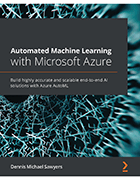CMU Researchers Introduce the Open Whisper-Style Speech Model: Advancing Open-Source Solutions for Efficient and Transparent Speech Recognition Training
SOURCE: HTTPS://WWW.MARKTECHPOST.COM/
OCT 03, 2023
Automated machine learning improves project efficiency
SOURCE: TECHTARGET.COM
FEB 17, 2022

Realizing a return on investment for data science projects often relies on data scientists' ability to fail quickly and then recover to deliver finished projects in a timely fashion. However, many of these projects take too much time and don't succeed.
Dennis Michael Sawyers, lead data scientist at SI Capital, explains in Automated Machine Learning with Microsoft Azure why companies aren't seeing the benefits of machine learning (ML) and AI projects and how they can address this issue.
Companies often equate ML projects with regular software development projects, but in fact they require different approaches. Another major difference is that with ML, you never know what data you're going to need in advance, because data sets are tested to determine the correct ones.
Managers who lack a data science background often try to follow methods and timelines that are inappropriate for ML projects. Hard timelines don't work since data scientists face numerous uncertainties. Therefore, these projects don't succeed when managers don't allow adequate time and support.
In the book, Sawyers elaborates on how new automated ML platforms mitigate these common ML-related issues, using AutoML from Microsoft Azure as the foremost example.
They provide the tools needed to surmount many of the hurdles data scientists encounter when building ML models. Specifically, they can automatically transform data, build models and tune the settings each ML algorithm has (called hyperparameters). The goal here is to automate much of the work data scientists do, allowing them to fail and succeed more quickly.
For example, this software transforms data automatically into cleansed, error-free data sets that are easy to understand. This is all done via intelligent "feature engineering" -- the process of altering data and making it suitable for machine learning algorithms. Also, to tackle the process of training a model, these new platforms train models using the most up-to-date algorithms.
The hope is that these new automated ML platforms will be widely used in the future, allowing data scientists to complete ML projects faster. In this excerpt from the first chapter, Sawyers outlines why businesses should embrace the general concept of automated machine learning.
Let's look at some of the advantages of AutoML:
LATEST NEWS
Augmented Reality
Hi-tech smart glasses connecting rural and remote aged care residents to clinicians
NOV 20, 2023
WHAT'S TRENDING


Data Science
5 Imaginative Data Science Projects That Can Make Your Portfolio Stand Out
OCT 05, 2022

SOURCE: HTTPS://WWW.MARKTECHPOST.COM/
OCT 03, 2023
SOURCE: HTTPS://NEWS.MIT.EDU/
AUG 17, 2023
SOURCE: HTTPS://WWW.SCIENCEDAILY.COM/
AUG 21, 2023
SOURCE: HTTPS://WWW.SCIENCEDAILY.COM/
AUG 17, 2023
SOURCE: HTTPS://WWW.SCIENCEDAILY.COM/
AUG 07, 2023
SOURCE: HTTPS://WWW.INDIATODAY.IN/TECHNOLOGY/NEWS/STORY/69-MILLION-GLOBAL-JOBS-TO-BE-CREATED-IN-NEXT-FIVE-YEARS-AI-AND-MACHINE-LEARNING-ROLES-TO-GROW-IN-INDIA-2367326-2023-05-02
JUN 28, 2023